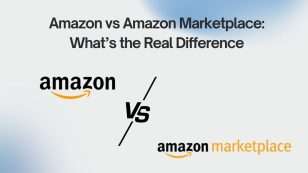If you’re an online seller using PayPal, you’ve probably asked yourself this at least once: “How long does PayPal take to verify tracking?” Whether you’re waiting for a payment hold to be lifted or trying to resolve a dispute, tracking verification can feel like a frustrating waiting game—especially when you’ve already shipped the item and done everything right.
PayPal plays a huge role in keeping transactions secure for both buyers and sellers. One of the key tools it uses to do this is tracking information. But what happens after you upload that tracking number? How long does it really take for PayPal to process it, verify it, and move things along?
In this guide, we’ll break down what PayPal tracking verification actually means, how long it typically takes, and what you can do to speed up the process. Whether you’re a new seller or managing hundreds of orders a week, understanding this system can save you time, stress, and potentially, your cash flow.
Let’s get into it.
What is PayPal Tracking Verification?
Before we dive into how long it takes, let’s clear up what “tracking verification” actually means in PayPal’s world.
When you sell a product and receive payment through PayPal, especially if you’re a new seller or dealing with higher-risk transactions, PayPal may temporarily hold the funds. One of the main ways to release those funds sooner—or simply confirm the transaction is progressing as it should—is by uploading a valid tracking number.
Tracking verification is the process where PayPal checks the tracking number you’ve provided against the shipping carrier’s database. Essentially, they’re making sure the item is really on its way—or better yet, has already been delivered. This is part of PayPal’s effort to protect both buyers and sellers by confirming that goods are in transit and eventually received.
PayPal’s system automatically connects with major carriers like:
- USPS
- UPS
- FedEx
- DHL
- Canada Post (and others, depending on region)
Once the tracking number is uploaded, PayPal monitors the status updates (shipped, in transit, delivered) to verify its authenticity. It’s not a manual process in most cases—PayPal relies on real-time API connections with carriers to pull delivery data.
So, when we talk about “tracking verification time,” we’re referring to how long it takes for PayPal’s system to recognize, process, and confirm that tracking info is valid and the shipment is on track.
Why PayPal Requires Tracking Verification
PayPal isn’t just being cautious for the sake of it. Tracking verification plays a critical role in how the platform maintains trust, reduces fraud, and keeps transactions running smoothly for everyone involved.
For sellers, tracking info is more than just a delivery update—it’s proof. It shows that you’ve fulfilled your part of the transaction by shipping the product to the buyer’s confirmed address. For buyers, it provides peace of mind that the item they paid for is on its way.
But the real reason PayPal puts so much emphasis on tracking is because of disputes and claims. If a buyer opens a case claiming they never received their item, PayPal will ask for evidence. A valid tracking number that shows the item was delivered is often all it takes to resolve the issue in the seller’s favor. Without it, sellers are at a much higher risk of losing money—even if they did ship the item.
Tracking verification also comes into play with payment holds, especially for new accounts, high-risk categories, or unusually large transactions. PayPal may hold funds for up to 21 days, but uploading tracking can often trigger faster releases—sometimes within 24 to 72 hours, once the system sees the package is in transit or delivered.
In short, tracking verification helps PayPal:
- Protect buyers from fraud.
- Protect sellers from unfair claims.
- Speed up the flow of funds when everything looks legit.
It’s a small step with a big impact—especially when you’re counting on those funds to keep your business moving.
How Long Does PayPal Take to Verify Tracking?
In most cases, PayPal takes between 24 to 72 hours to verify a tracking number after it’s been uploaded. That window can feel longer when you’re waiting on held funds or dealing with an anxious buyer—but the process is fairly automated and depends on a few key factors.
PayPal’s tracking verification system isn’t instantaneous, but it is fairly efficient. Once you upload a valid tracking number from a supported carrier, PayPal starts monitoring it for shipping updates. The system looks for signals like “Shipped”, “In Transit”, or ideally, “Delivered” to confirm that the item is on its way or has reached the buyer.
So, what affects how fast PayPal verifies tracking?
Let’s break it down:
- Carrier Used
Not all shipping carriers report tracking updates in the same way or at the same frequency. Major carriers like USPS, UPS, and FedEx integrate directly with PayPal and update their systems more frequently. If you use a lesser-known or international carrier, PayPal might take longer to retrieve updates—or may not fully verify the tracking until delivery is confirmed. - Delivery Status
Uploading a tracking number that only says “Label Created” won’t do much. PayPal is primarily looking for signs that the item is actually moving. When the tracking shows “Out for Delivery” or “Delivered”, the system can often verify it faster and release held funds sooner. - Your Account’s History
New sellers or those with limited transaction history may face longer wait times. PayPal tends to apply more scrutiny to new accounts, high-risk transactions, or unusual activity. On the other hand, if you’ve consistently delivered items and maintained a healthy seller profile, your tracking could be verified more quickly—even automatically.
Real Seller Expectations
While 24–72 hours is the typical timeframe, some sellers report near-instant verification, especially once the tracking hits “Delivered” and the system recognizes it. Others, particularly those using slower carriers or newer accounts, may find it takes the full 3 days—or occasionally a bit longer.
The key takeaway? Don’t just upload a tracking number and wait—make sure the number is from a supported carrier, is entered correctly, and reflects real movement. That’s what PayPal’s looking for when deciding whether to trust the shipment and move things along.
What Happens After PayPal Verifies the Tracking?
Once PayPal verifies your tracking number, things usually start to move in your favor—especially if the transaction was subject to a payment hold.
If your funds were being held, tracking verification is often the trigger that releases them sooner. In many cases, once the system confirms the item has been delivered (based on tracking info), PayPal will automatically release the funds within one business day. For some sellers, this can be a huge relief, particularly when cash flow is tight or you rely on quick turnovers to restock inventory.
Beyond the payout, verified tracking also plays a critical role in dispute resolution. If a buyer opens a case saying they didn’t receive their item, a verified tracking number showing “Delivered” at the buyer’s confirmed address is usually enough to win the case in your favor. Without it, you may be at risk of losing the payment—even if the package was sent.
Here’s what typically happens after tracking is verified:
- Held funds may be released earlier than the 21-day standard.
- Your seller reputation improves—reliable tracking history builds trust with PayPal.
- You’re better protected against disputes and chargebacks, especially in “Item Not Received” claims.
- The buyer is notified of delivery progress, which can help reduce support messages and frustration.
It’s a small confirmation step, but one that can shift the momentum of a transaction completely. Getting that tracking verified not only secures your money faster—it also gives you peace of mind.
How to Speed Up PayPal Tracking Verification
While you can’t fully control PayPal’s internal process, there are smart ways to help speed up tracking verification on your end. The goal is to make it easy for PayPal’s system to recognize your shipment as legitimate, active, and trustworthy.
Here are a few practical tips that sellers use to accelerate the process:
- Use supported carriers with real-time tracking updates.
Stick to major services like USPS, UPS, FedEx, or other carriers that are directly integrated with PayPal. These providers sync more quickly and reliably with PayPal’s system, reducing delays in tracking verification. - Double-check the tracking number format.
Typos or incorrect entries can prevent PayPal from recognizing the shipment at all. Always copy the tracking number directly from the shipping label or receipt and paste it into PayPal without alterations. - Ship promptly—and update PayPal immediately.
The sooner you ship the item, the sooner tracking activity begins. Don’t wait days to update your PayPal order; upload the tracking number as soon as you hand off the package to the carrier. - Mark the item as “shipped” and notify your buyer.
This signals PayPal that the transaction is moving forward. It also reassures your customer and may reduce the chances of them opening unnecessary disputes or claims.
Also, keep in mind that PayPal gives priority to tracking that shows clear movement, especially when it reaches the “Delivered” status. If the package is already marked as delivered by the carrier, PayPal often verifies it quickly—sometimes even within a few hours.
Being proactive and accurate isn’t just good practice—it’s the fastest way to get your money moving.
Common Issues and Fixes
Even when you’ve done everything right, tracking verification doesn’t always go smoothly. Sometimes, delays or glitches happen—either on the shipping carrier’s side or within PayPal’s system. Here are some of the most common issues sellers run into, along with practical ways to fix or avoid them:
1. Tracking Not Updating or Stuck in “Pre-Shipment”
This usually happens when a label is created but the package hasn’t actually been dropped off yet, or the carrier hasn’t scanned it into their system.
Fix: Make sure to drop the item off promptly and ask for a scan receipt if possible. Until the carrier scans the package and updates the tracking status, PayPal may not consider it valid.
2. Invalid or Unrecognized Tracking Number
Sometimes, you might accidentally enter the wrong number, or use a carrier that PayPal doesn’t support for auto-verification.
Fix: Double-check the format and make sure the carrier is listed in PayPal’s supported network. If you’re using a lesser-known or international courier, consider switching to one PayPal integrates with more reliably.
3. Buyer Files a Dispute Despite Valid Tracking
Even with verified tracking, buyers can still open disputes—whether it’s due to a delay, confusion, or misunderstanding.
Fix: Stay ahead of concerns by messaging your buyer when the item ships and sharing the tracking link. If a dispute arises, respond quickly and provide screenshots or links showing the “Delivered” status tied to the buyer’s confirmed address.
4. Tracking Shows “Delivered” But Buyer Claims Otherwise
This is tricky but not uncommon. A buyer may claim they never received the package even if tracking shows it was delivered.
Fix: In most cases, if the tracking confirms delivery to the buyer’s confirmed address, PayPal will side with you. Still, it helps to ship with signature confirmation for higher-value items to strengthen your case.
While these hiccups can slow things down, they’re usually easy to resolve with a little attention to detail and proactive communication. Most delays are temporary—and learning how to handle them helps you build a smoother, more trusted operation over time.
Final Thoughts: Be Proactive with Your PayPal Orders
Waiting for PayPal to verify tracking can be a bit nerve-wracking—especially when your funds are tied up and you’ve already done your part. But the process doesn’t have to be frustrating. Once you understand how PayPal uses tracking info, and how to work with their system (not against it), things tend to move a lot more smoothly.
The key is to be proactive and accurate. Use reliable shipping carriers, upload tracking as soon as possible, and make sure it reflects real movement—not just a label. Communicating with buyers and keeping your account in good standing also goes a long way toward reducing delays and building trust with the platform.
In most cases, once your tracking is verified—especially when it shows the item has been delivered—PayPal will release your funds promptly and protect you in case of disputes.
At the end of the day, tracking verification isn’t just red tape—it’s a layer of protection for you as a seller. And when used right, it’s a powerful tool to keep your cash flow strong and your reputation solid.
Keep shipping smart, and PayPal will take care of the rest.
![]()










